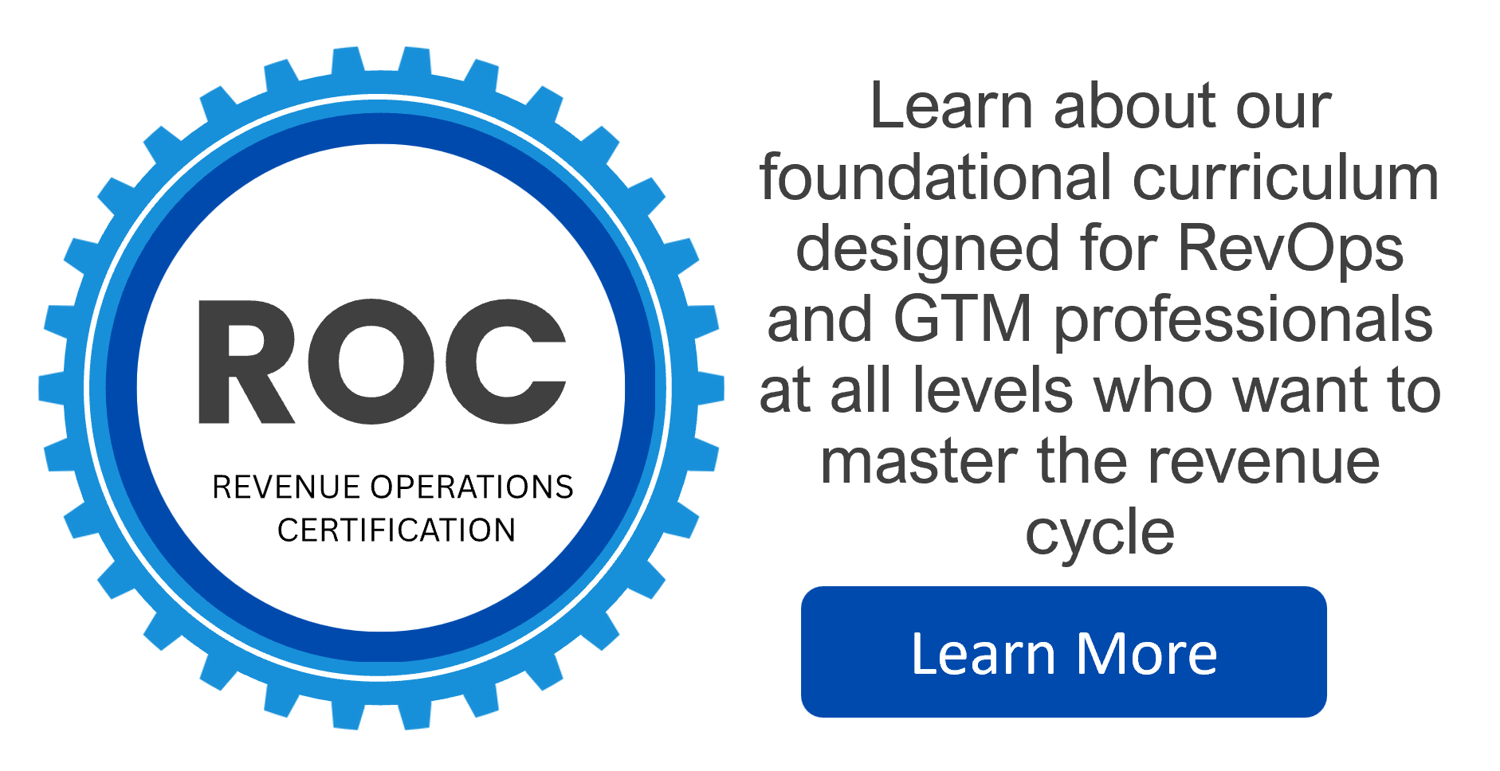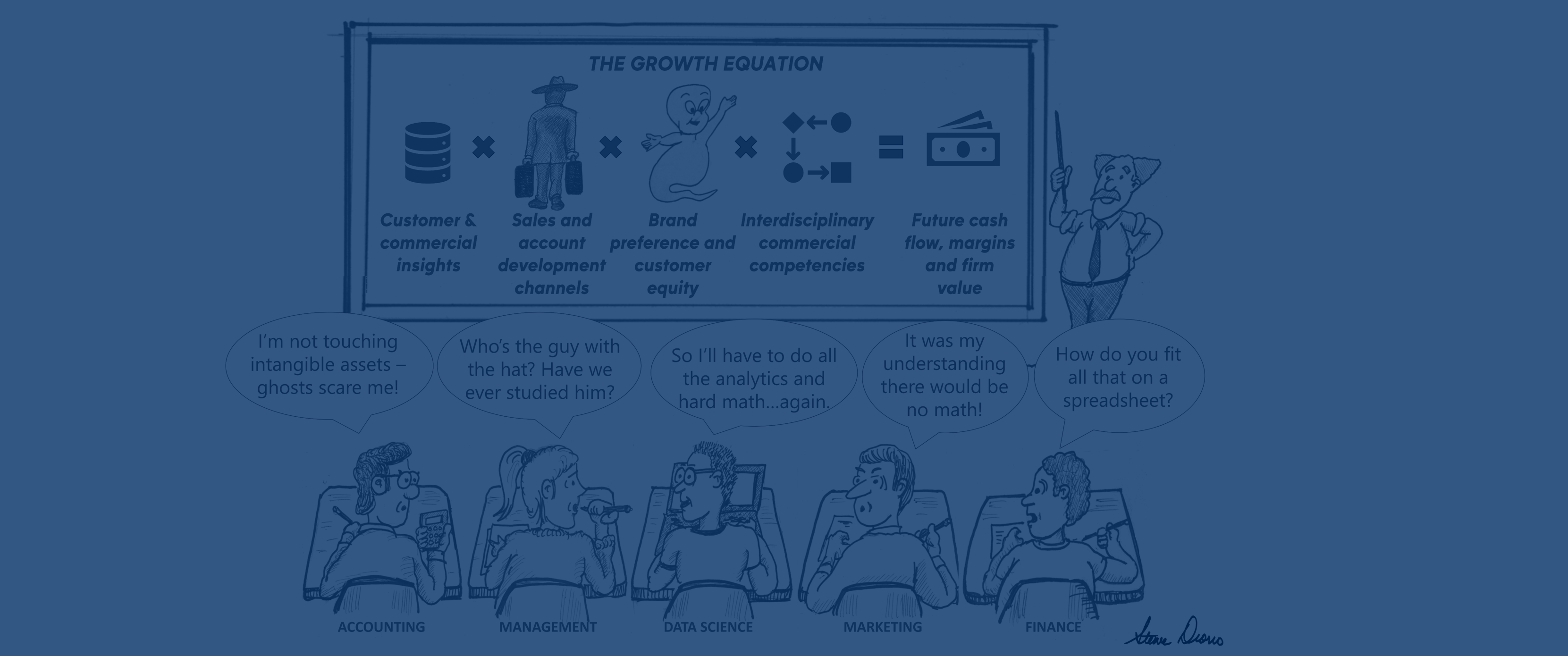The Difference Between Planning and Executing and Realizing Growth
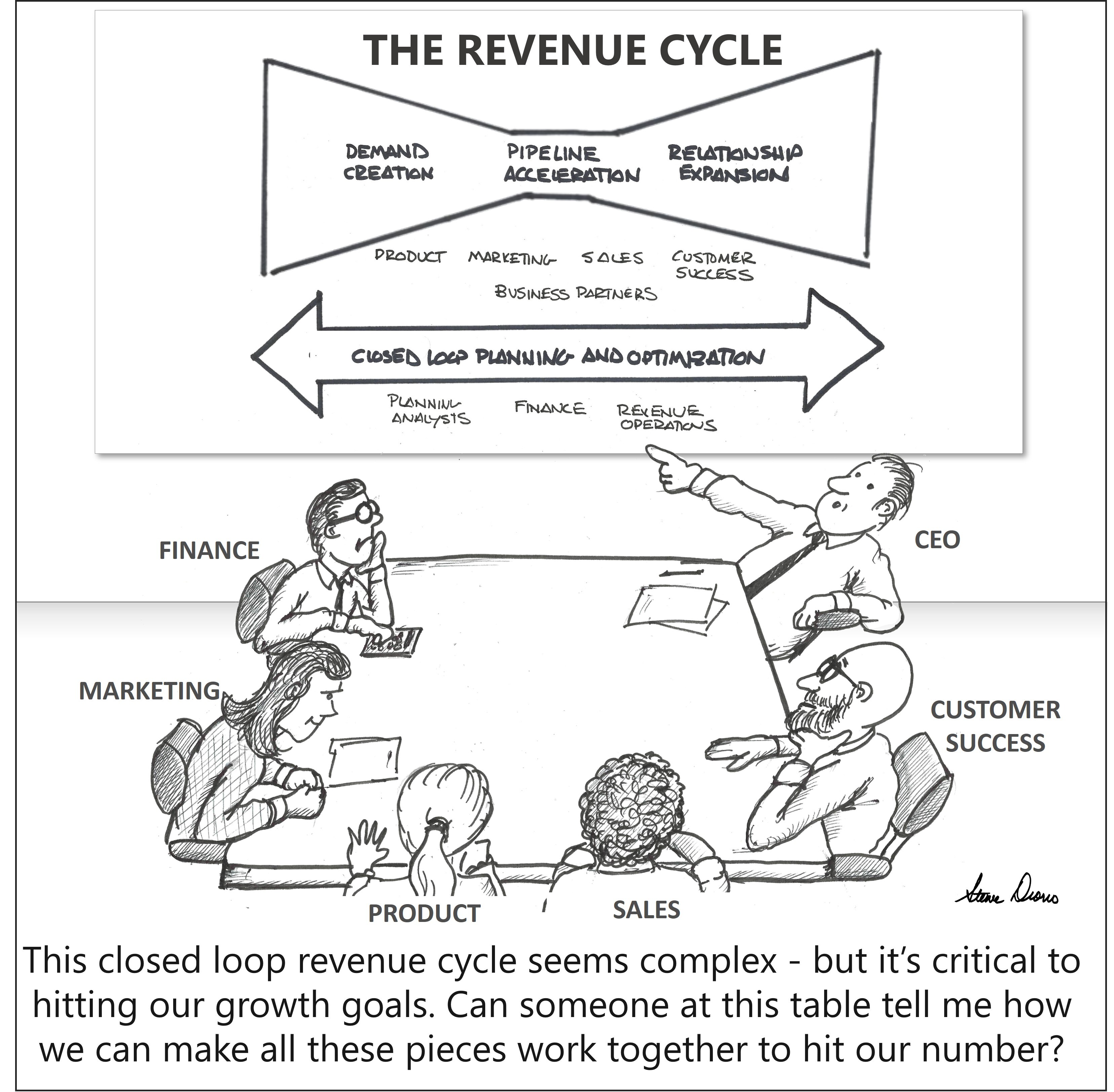
There is a lot of noise about “Go-to-Market” going on in the market. But not a lot of substance.
The term Go-to-Market (or GTM) actually means something. But it’s been largely reduced to a buzz word. A buzz word that makes marketers sound more strategic. Something that PE investors sound more scientific. In a broad sense, it helps growth leaders sound like they understand a commercial model that has become very complicated. And it helps software vendors sound more cutting edge.
Larry Friedman, who wrote the definitive text on Go-to-Market Strategy two decades ago defines it as a strategic plan, or game plan. Pretty much every other consultant, agency, blogger in the world circles around a similar focus. Even Wikipedia calls it a plan. And technically, Larry is correct.
But what this definition leaves out is that GTM is a very very complicated plan. With lots of moving parts. Across functions, silos, systems, teams, and stages of the revenue cycle. And GTM planning has become even more complicated with the advent of digital channels, sales enablement, and now AI. Making matters worse, they don’t teach managers how to connect and manage all these channels in business schools.
Consequently, a GTM is a plan that is very difficult to execute. And if you can’t execute your GTM plan, then you cannot generate revenues. My smarter clients called these types of plans “Credenza ware” because they largely sit on the shelf while the people and systems generating revenue muddle along in silos against isolated goals.
So how did GTM become so complex? Friedman provides a history of this evolution of GTM into a complex multi-channel system in his book. To start, he makes it clear that businesses have been “going to market” for centuries - albeit in a very analog and human way.
The actual term Go-to-Market emerged in the 1980s to describe some changes in the commercial model that are profound. Until the 1980s, the predominate way businesses “brought their products to market” involved a lot of humans knocking on doors, visiting offices, or working behind counters. The emergence of direct mail, call centers, Electronic Data Interchange (EDI), and ultimately the worldwide web introduced a wider array of channels into the mix. These channels cost less, moved faster, and appealed to more and more customers in more and more elements of the revenue cycle. Suddenly selling your product involved many, or dozens of “channels” that needed to be coordinated, provisioned, enabled, and managed.
Managing all this complexity and connecting all these moving parts means that Go-to-Market is best defined as a system. Go-to-Market is a system that aligns the key revenue generating functions and teams in your business – and the processes systems, operations, and information that support them - along the revenue cycle to drive profitable, scalable, and reliable growth.
So, the misconception that marketing can lead the GTM is flawed. Product, Sales, Customer Success, and Finance, and increasingly IT all need to work together to execute the revenue plan. Another outdated notion is GTM investment is largely made up of operational budgets for advertising, promotions, events, and campaigns. Over the last two decades, we’ve seen that large investments in technology are required to make the GTM smarter, faster, and more effective. Capital investment in digital channels, automation, AI, databases, and commercial assets (like brands, IP, innovations) are a big part of what makes the modern GTM run. And half of the value a GTM team creates really depends on how well they work together and share information.
This makes executing the GTM is a process-driven, technology enabled, capital intensive team sport. Executing your GTM plan involves aligning your growth functions and product teams – and the systems, data and channels that enable them - along a revenue cycle to maximize growth, profits, and customer lifetime value. That’s a mouthful.
A more concise way of saying all that is Revenue Operations. Revenue Operations is essentially the systemization of this GTM.
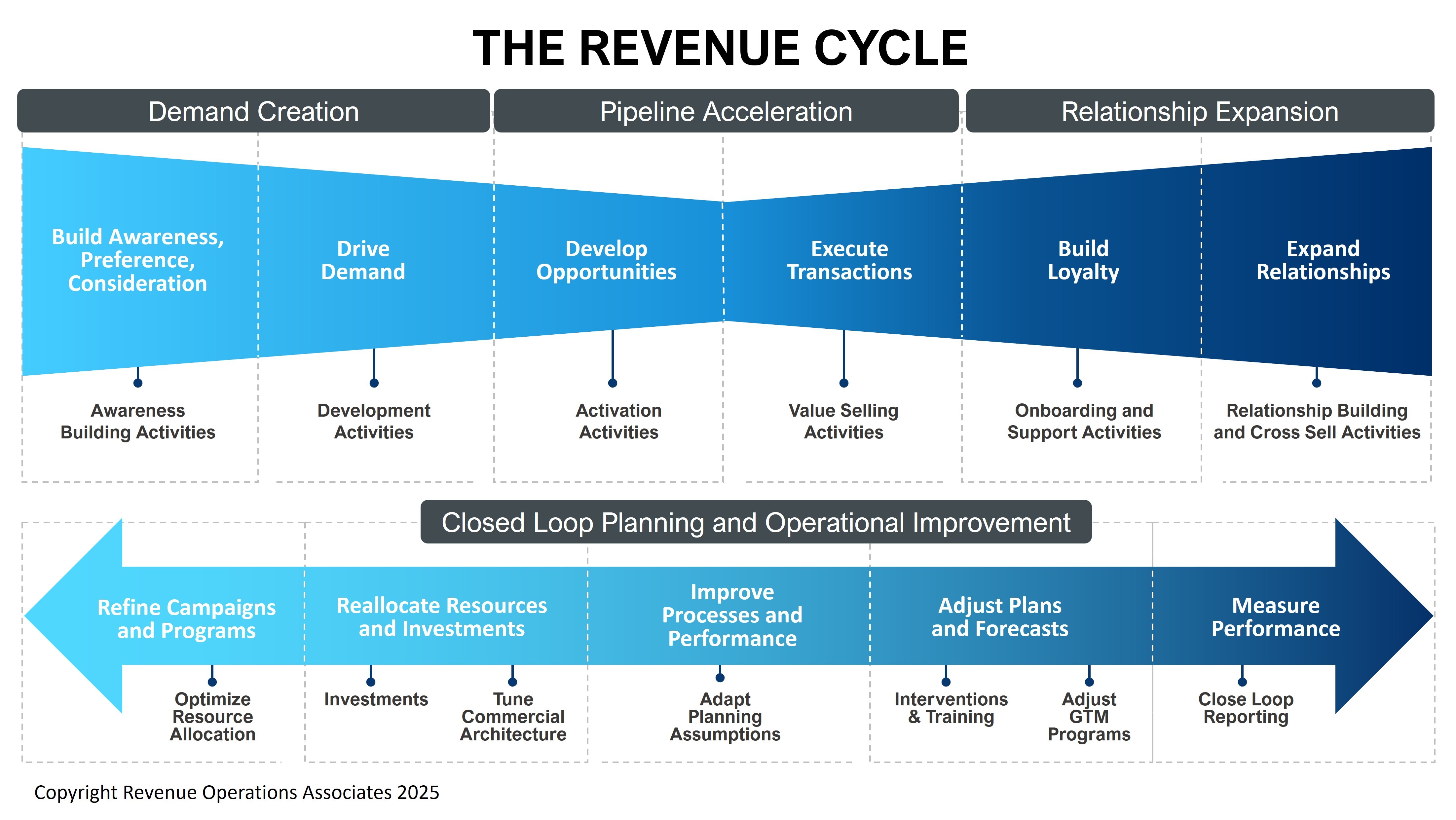
Until the executives understand and manage Go-to-Market (or GTM) as a system - a system that generates more profitable, scalable, and reliable growth in their business – they’ll be describing something they cannot fully act upon or realize.
So, what is involved in systematizing your GTM to get results? A number of things. Some involved collaboration, teamwork, and ways of working management. Others require digitizing processes and connecting systems. Here are six things that I see separating GTM planning from executing those plans and realizing their full revenue potential.
- Establish cross functional projects that connect the dots across the revenue cycle. Our research identified fifteen common projects that connect processes, systems, and data flows to enable and execute the GTM strategy. These investments range from cross functional projects that grow revenue, cash flow, and scale with limited risk. Some involve connecting systems across silos to automate planning, simplify the seller workflow or streamline the RFP response process. Others involved teamwork across product, marketing, sales, and finance to improve the lead-to-cash cycle and better structure and govern pricing. Some of the most impactful cross functional collaboration involves improving your ability to collect, clean, share and codify information from across the business to better target campaigns, better allocate resources and more reliably forecast cash flows. It’s likely many or most of these projects will be worth the effort from an ROI perspective. But by their nature, cross functional projects that connect many dots across systems, data sets and established ways of working require more change management than not. So, your business likely has limited bandwidth and management zeal for taking on more than a few of these. That makes it very important to understand which projects can create the most business impact in your commercial model and unique situation. And build a consensus across the dependent functions that the investment is worth the change, effort, and collaboration required to execute.
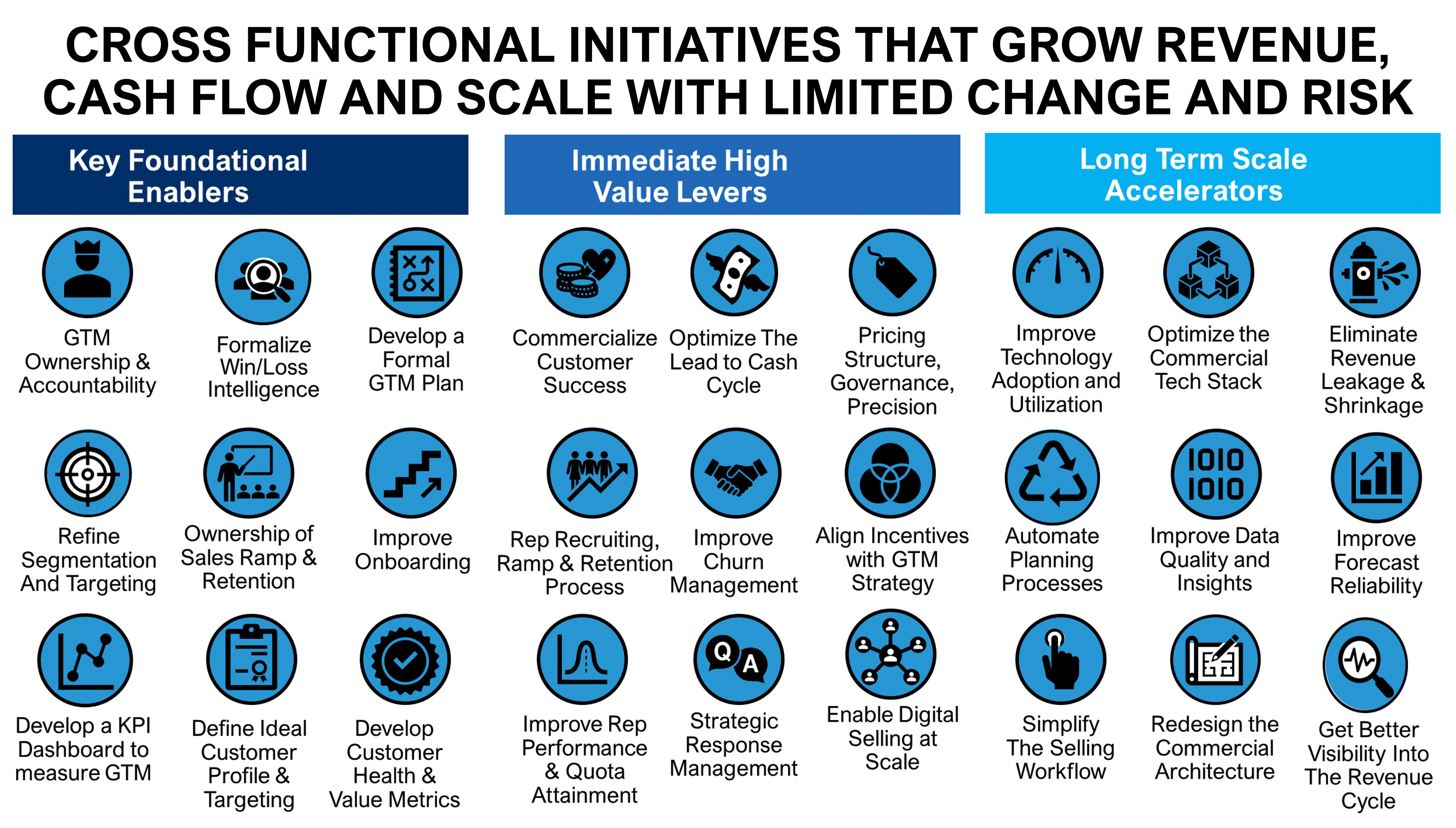
- Assign and empower someone to own the GTM. There are forty-five drivers of growth proven to be causal fo future revenues, cash flow. They range from pricing discipline to the efficacy of your commercial architecture to your ability to share customer information horizontally across teams. No single department or individual in a business owns more than half of them. Expand the remit of a CRO to execute GTM programs along the revenue cycle to include as many of these as possible. While it’s impossible for any executive, other than the CEO, to control every growth lever in the business – having more levers under your direct control, and a common understanding of the levers that required collaboration, will give you a big leg up.
- Establish a robust process of continuous improvement - Focus less time on pipeline metrics and more time on making adjustments, interventions, investments, and reallocations to get the process working better. countless breakthroughs in science and technology. Why? Because most conventional GTM plans ignore the scientific method - one of mankind’s greatest innovations. This systematic approach to inquiry – using iterative trial and error – allows you the opportunity to test, learn and adjust your coverage, campaigns, treatment model, channel mix, sales cadence, and product packaging in ways that can improve price, cost to sell, conversion rates and customer loyalty. Unfortunately, for some reason the notion of GTM has become affiliated with the pipeline, or in a modern sense the “bowtie” that maps demand creation, pipeline acceleration, and Relationship expansion. And that’s fundamental to managing a modern commercial model. But all that really does is describe where things are going well, and places where they are not. The real action, and improvement, comes from the closed loop planning and operational improvement at the bottom. Focus your leadership and operations teams less on accurate pipeline reporting and more on learning, adjusting, improving processes, reallocating, and refining.
- Redefine the metrics that matter along the revenue cycle to focus on the places cash leaks out, deals stall, customers get angry, and effort can be multiplied. Focusing on these will unlock growth and give you a clear roadmap on where to invest in technology and AI agents. When something goes wrong in one part fo the revenue cycle – the causal factors probably lie in several other places. For example, when a CFO complains about revenue leakage and billing issues, it’s usually the result of poor pricing discipline, bad communications or unclear expectations set by marketing, sales, or the deal desk. In addition, focusing on the “moments that matter” is a great way to create KPI that align with value creation while breaking down siloed metrics (like MQLs and conversion rates) and get at the core issues that are holding back growth.
- Understand the math of growth – The primary goal of you GTM is to accelerate growth by increasing sales effectiveness, marketing impact, margins, and customer lifetime value - while shrinking the cost to sell, attrition, revenue leakage, and the selling cycle. Most organizations do not measure these value drivers properly. Most growth leaders don’t understand what levers to pull to improve these outcomes. Most CFOs and revenue leaders don’t understand the “math of growth”. Finance teams in particular view, treat, evaluate, and allocate critical growth investments as discretionary costs or SG&A. That is not a good formula for success in a modern commercial model.
- Get good at Revenue Operations – So if executing the GTM is a process-driven, technology enabled, capital intensive team sport – you better have an amazing operations team. Most organizations have adopted some form or Revenue Operations. The discipline of RevOps can span a dozen titles – Marketing Ops, Sales Enablement, CRM Administration, Customer Success Operations or Deal Desk. But make no mistake, these unsung operations teams are increasingly the key to providing the insights, content, plans, targets, automation, and channels you need to grow. No other function is primarily motivated to connect the dots across functions and systems to generate the business outcomes that drive profitable growth and firm value. And if you want to have any chance of leveraging AI to multiply the efforts of your team, it’s your RevOps team that controls the knowledgebases that fuel them, the customer facing channels and use cases to monetize AI, and the algorithms that drive those use cases.
“You can’t execute a modern Go-to-Market without Revenue Operations,” reinforces Steve Busby, the CEO of Revenue Operations Associates, a company that offers RevOps certification programs and GTM acceleration tools that help businesses unlock their GTM potential. “RevOps is emerging as the strategic discipline required to execute, accelerate a modern GTM strategy as growth becomes more data driven, digital and client driven. The expectation that AI will transform the GTM only amplifies the importance of the RevOps function and discipline.”
